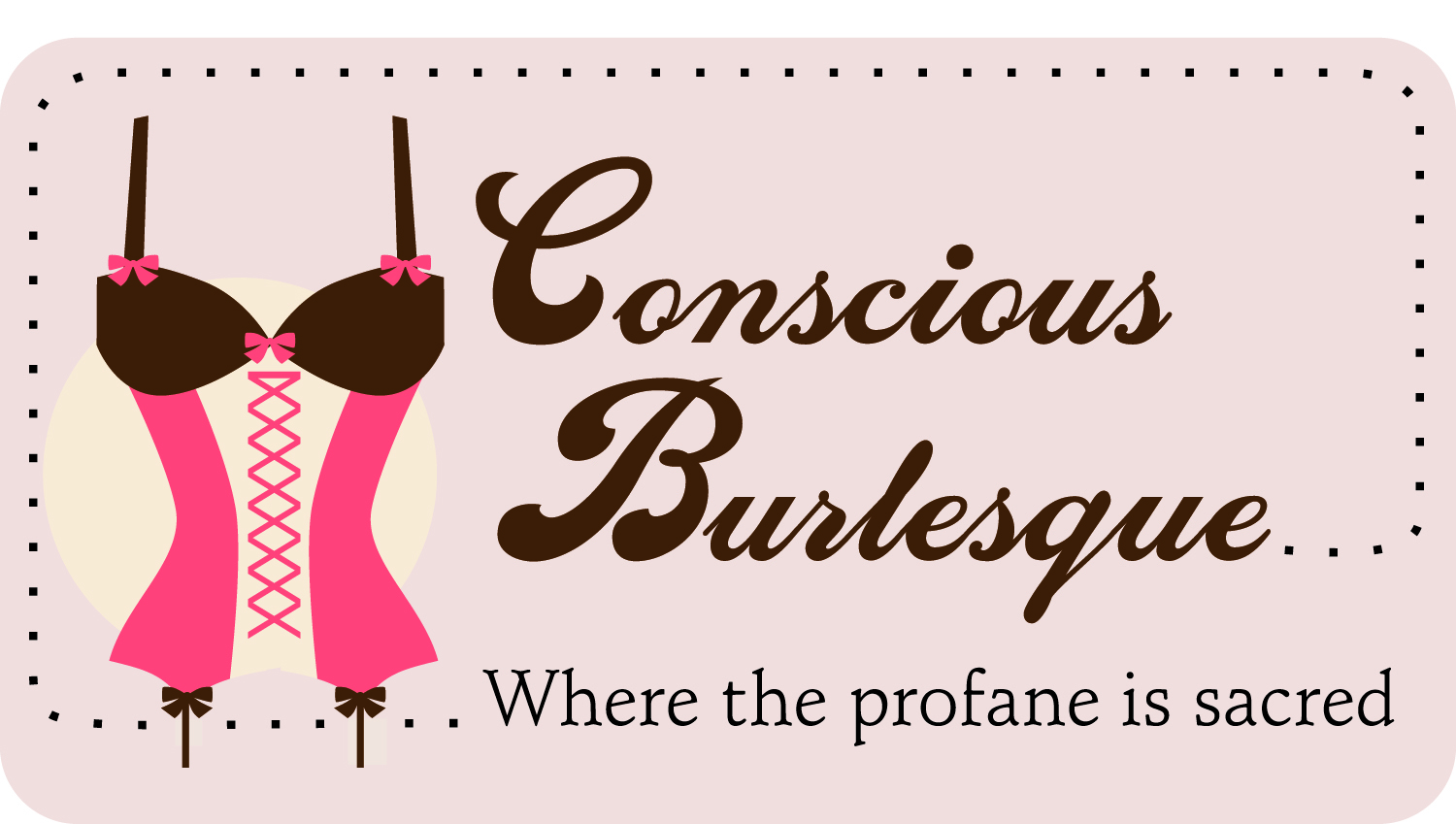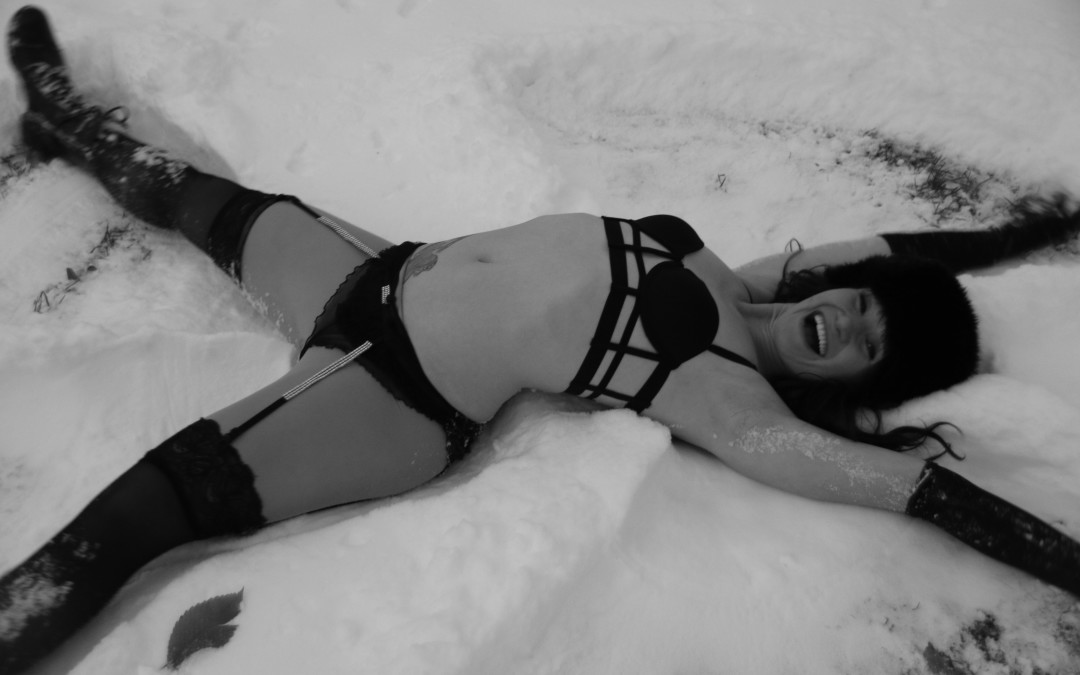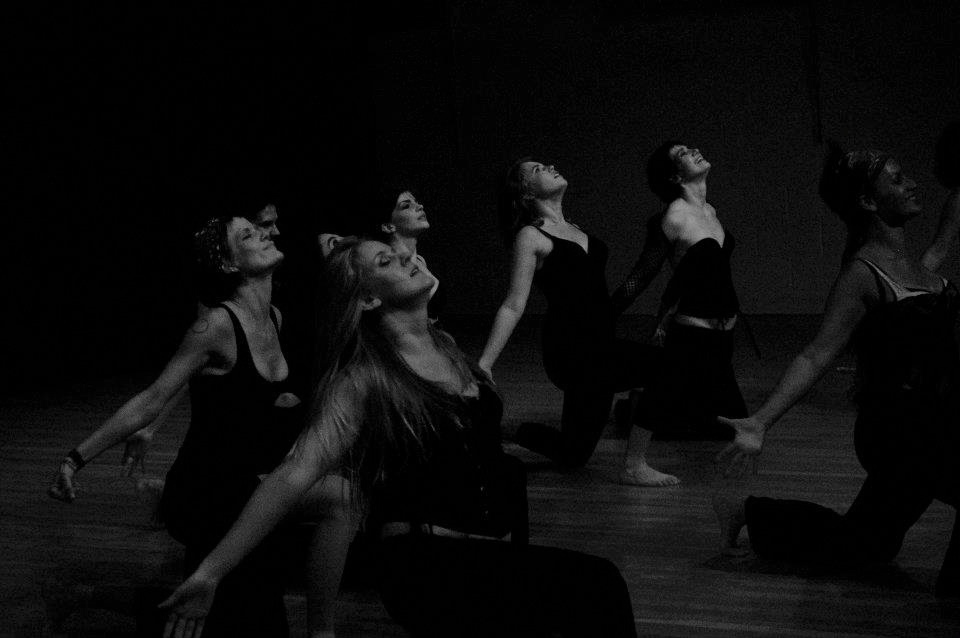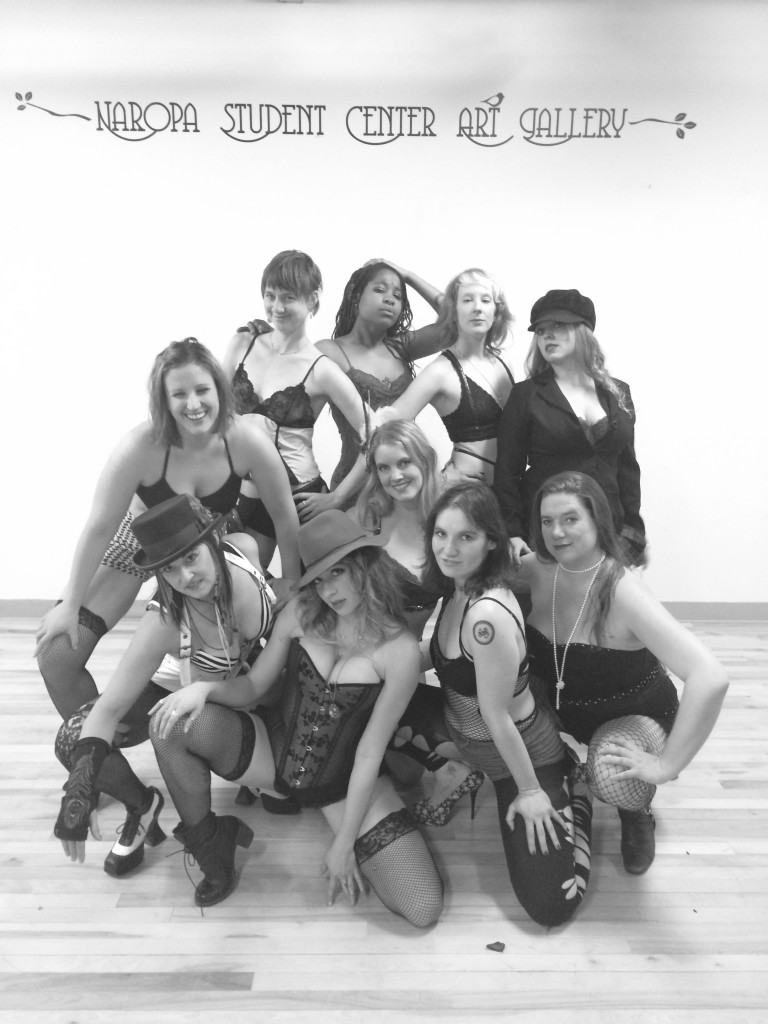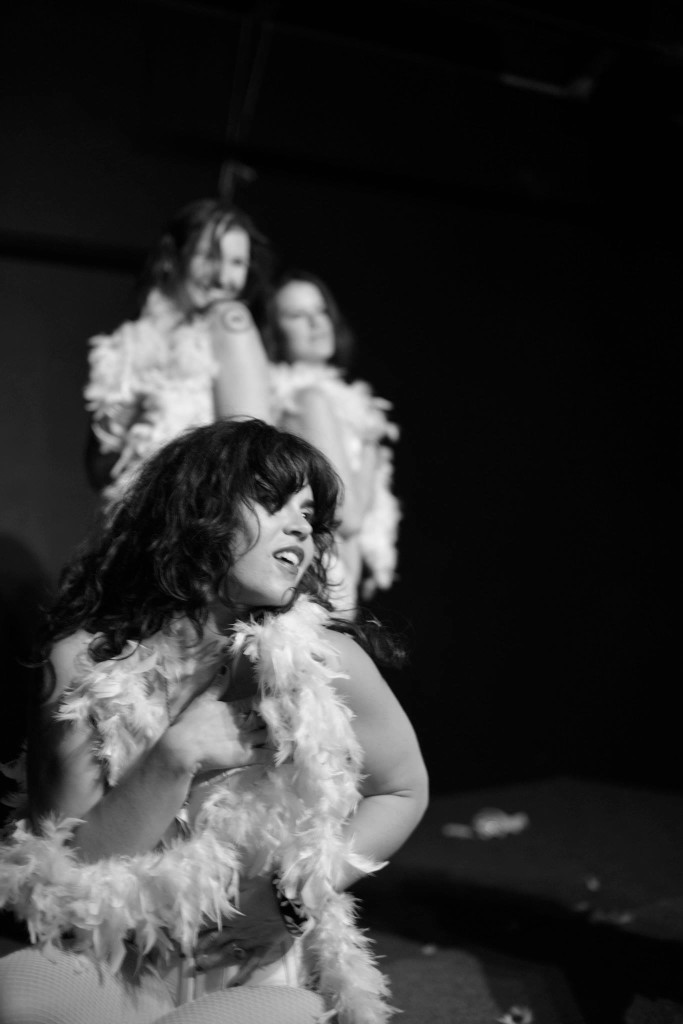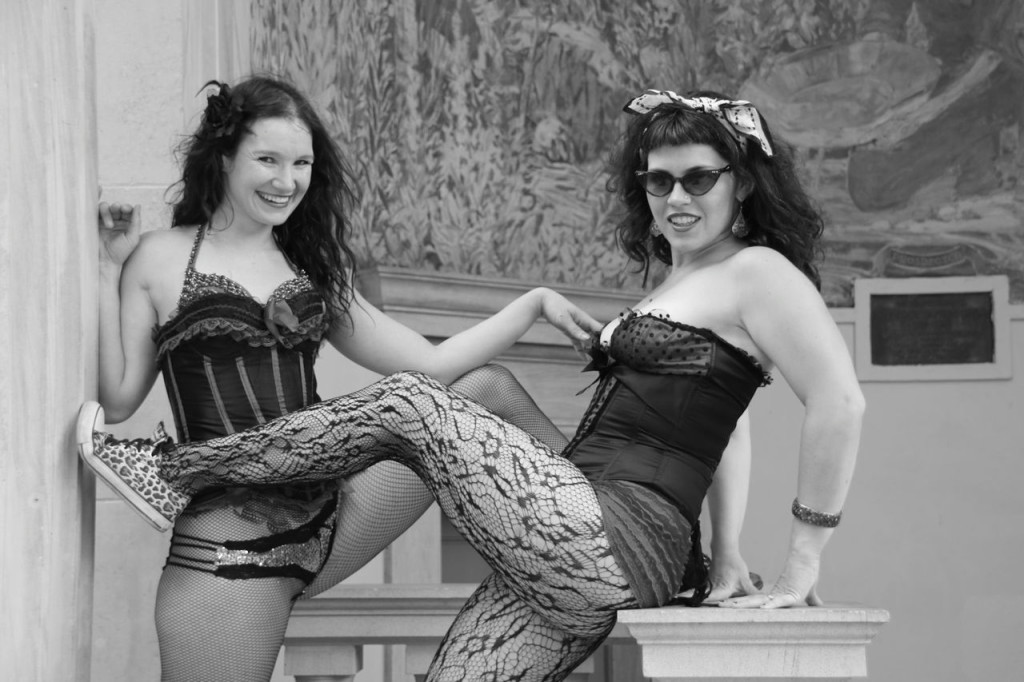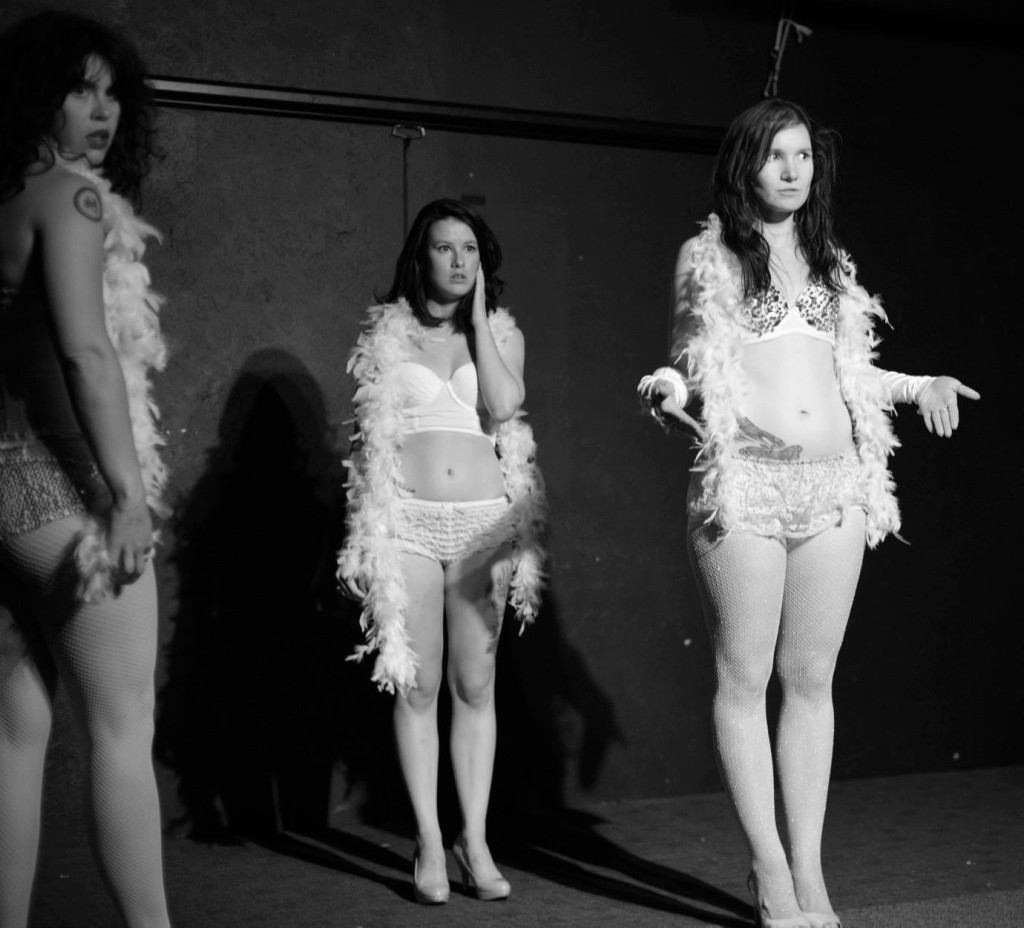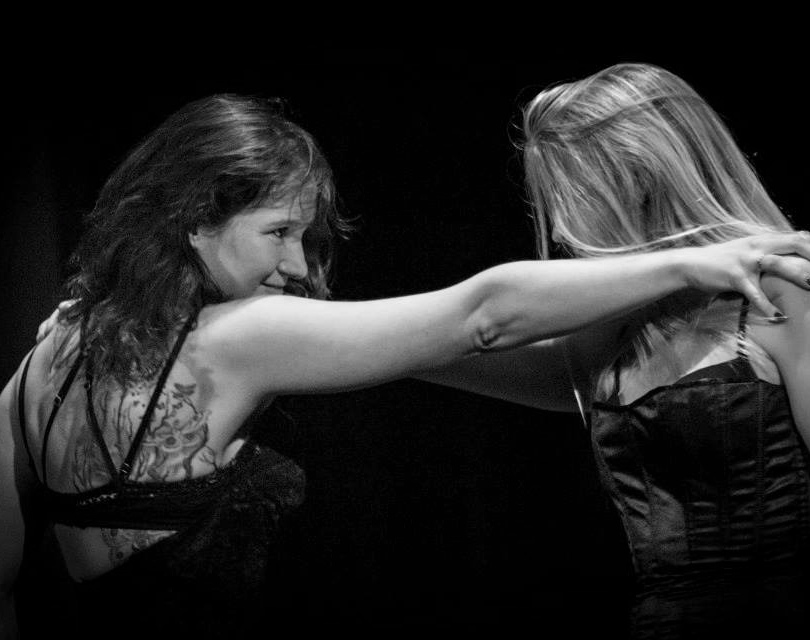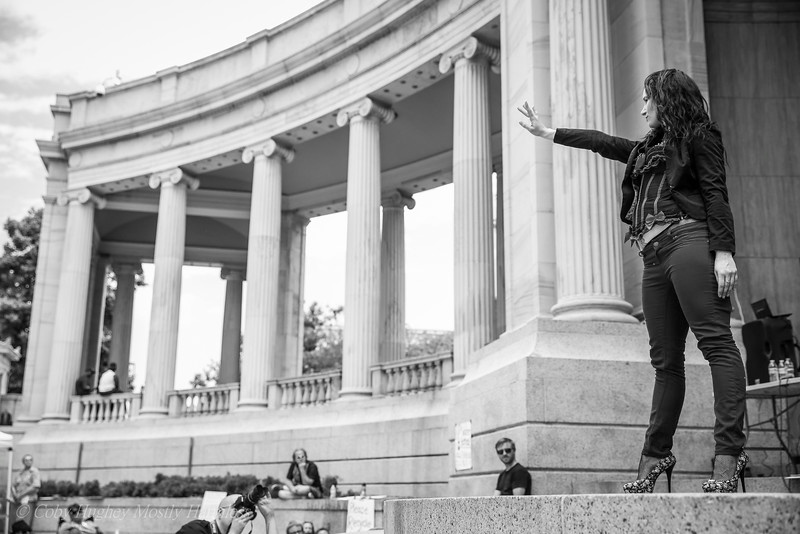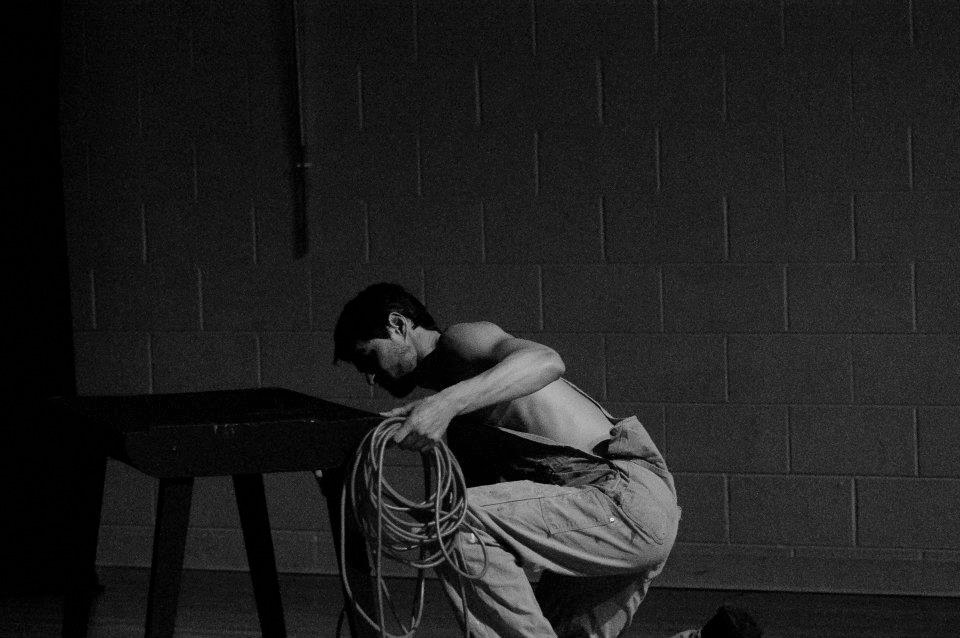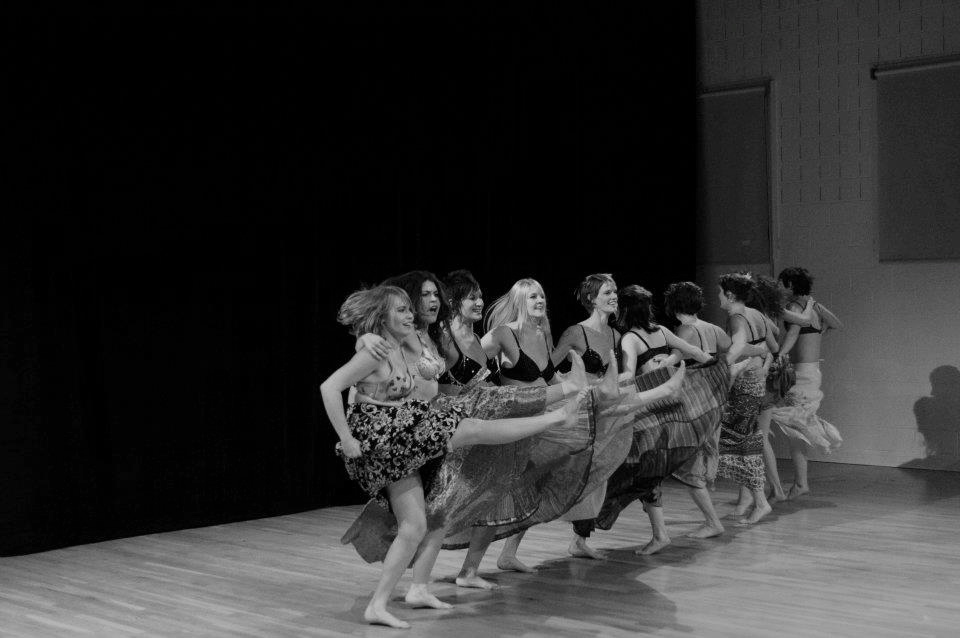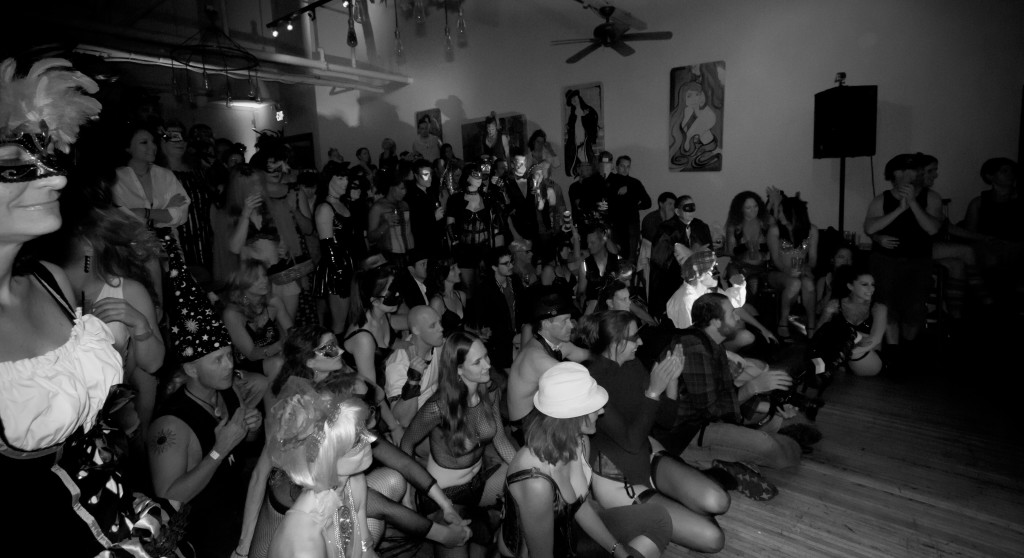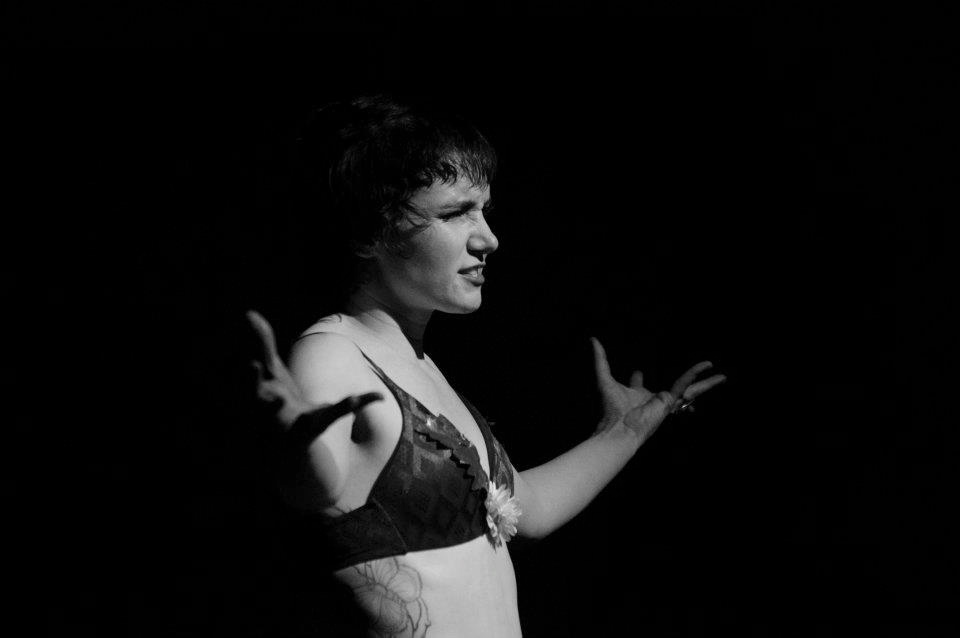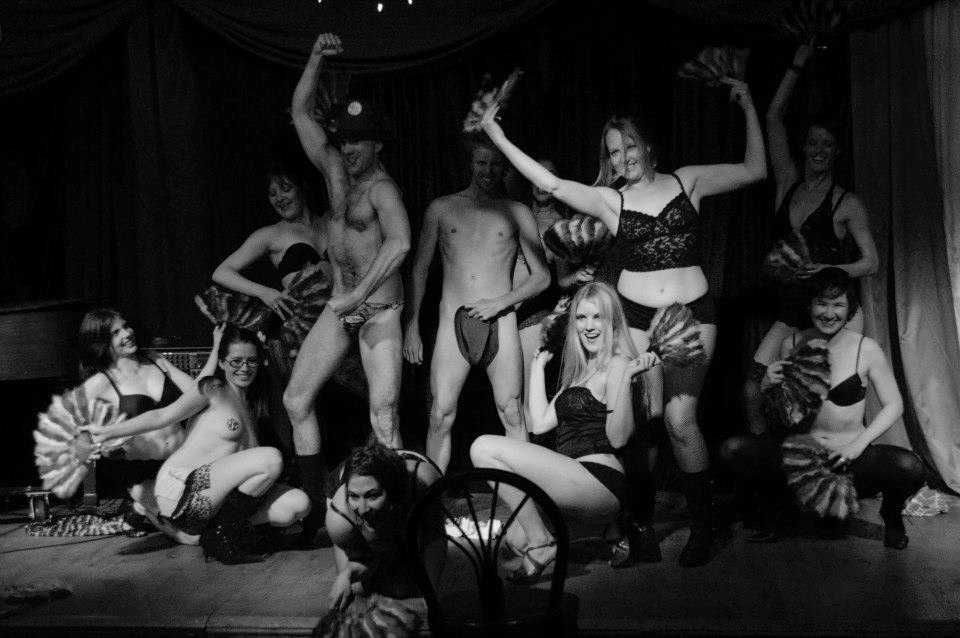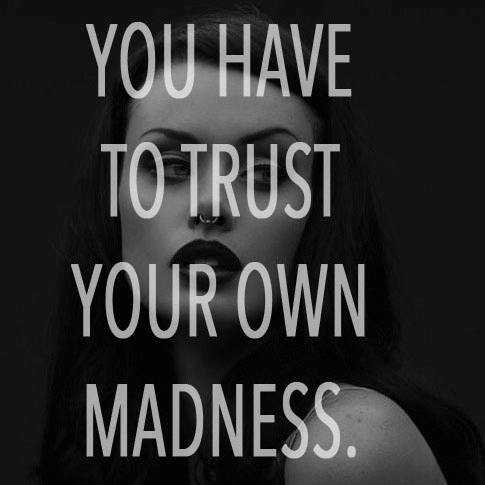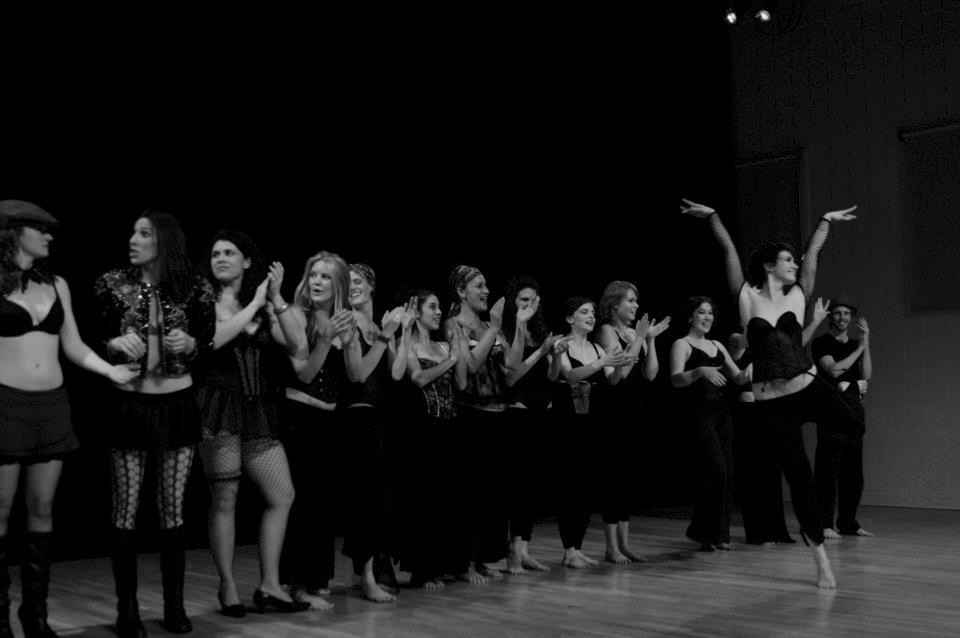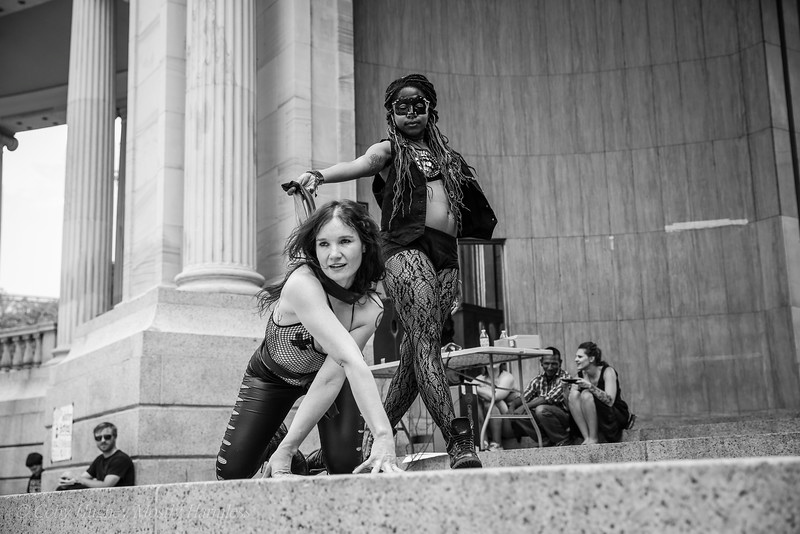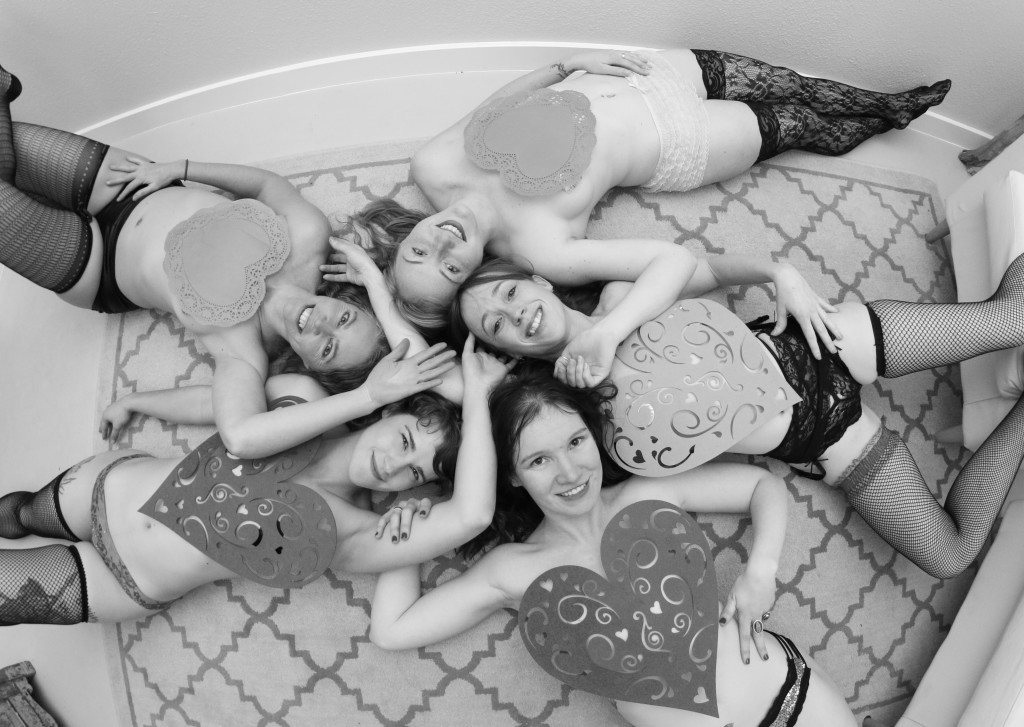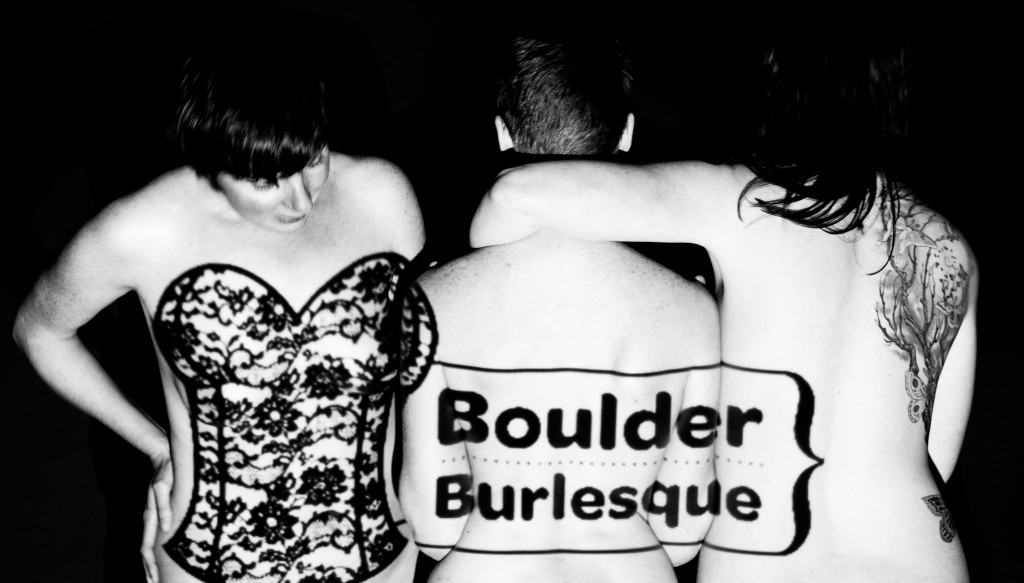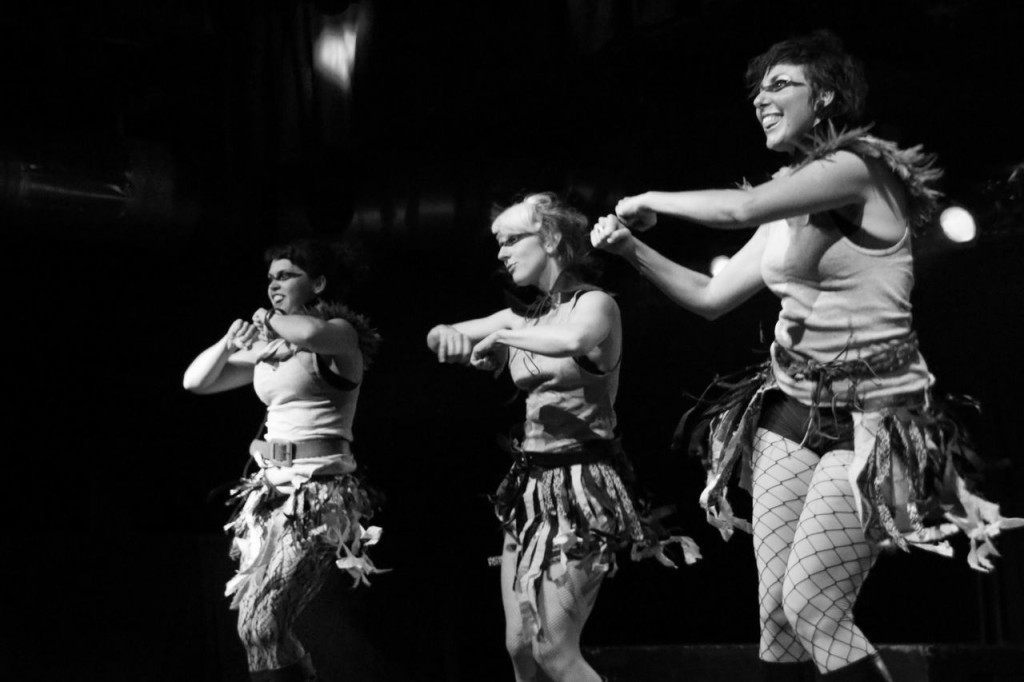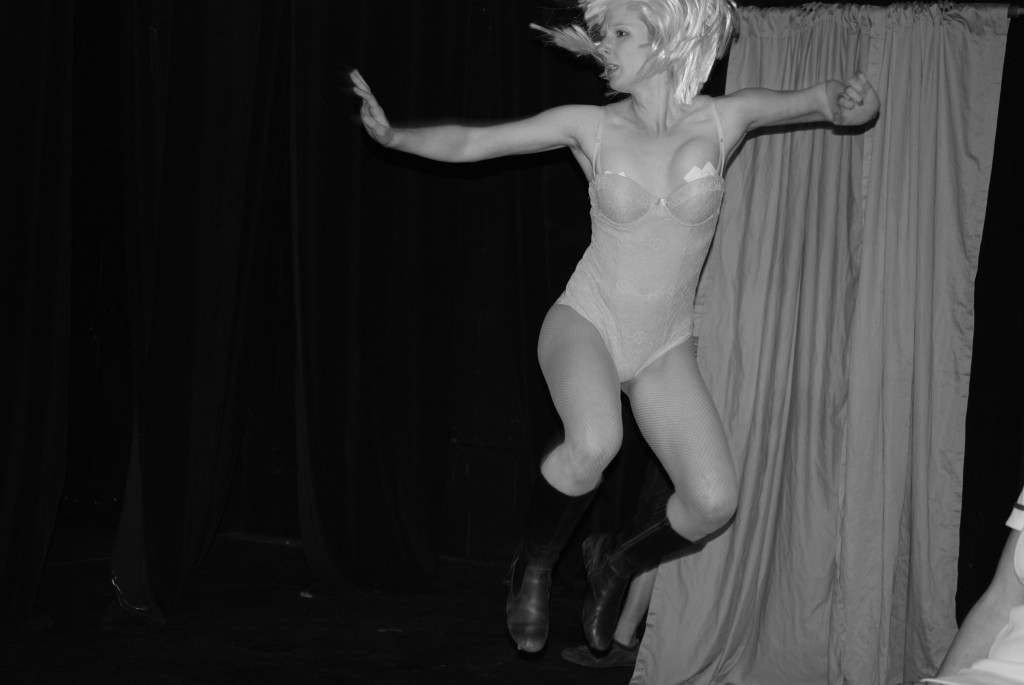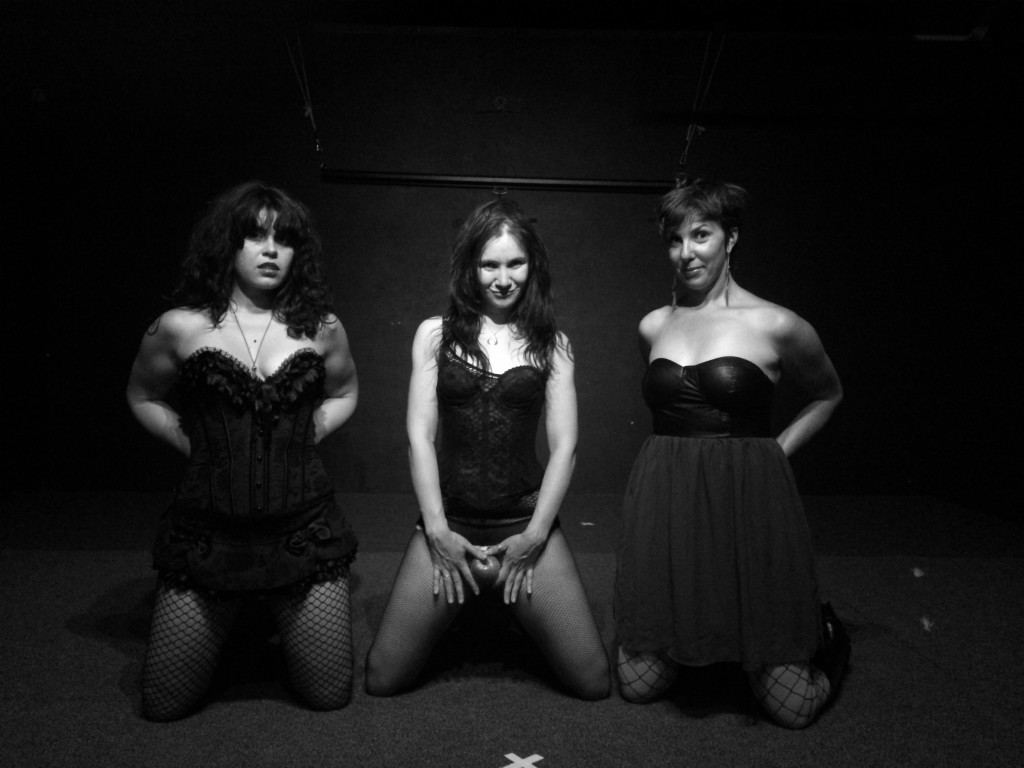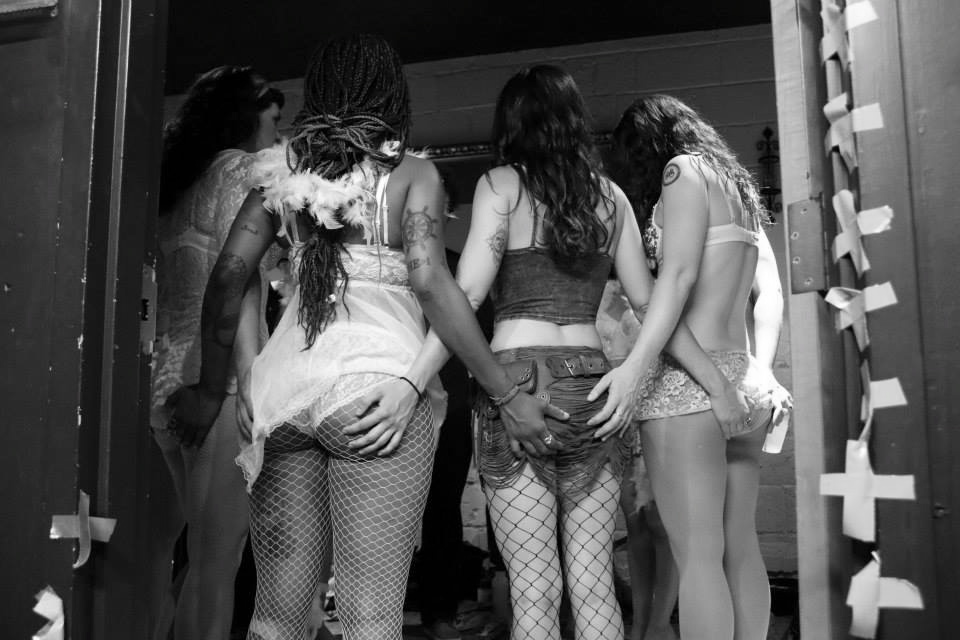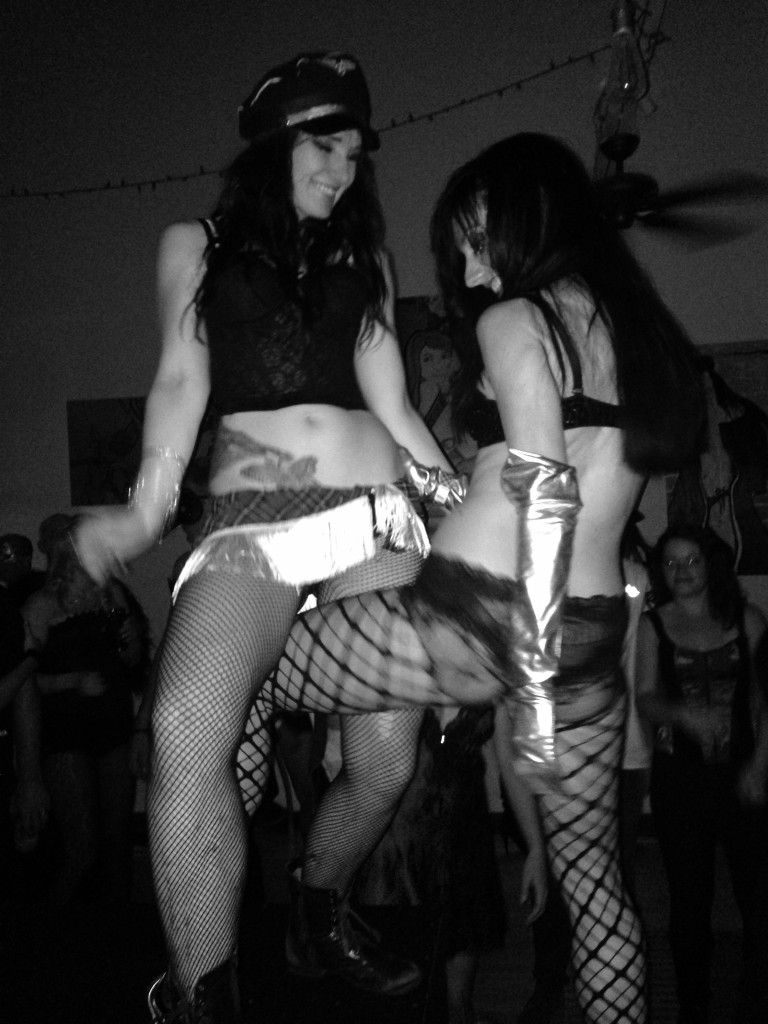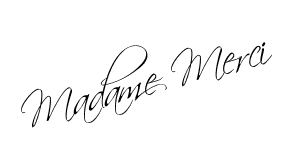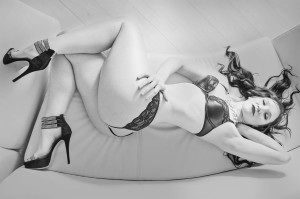During my time at Naropa for my undergraduate degree I began a self-study course in sexuality, female empowerment, and body image. I was essentially on my own. Naropa, although diverse and idiosyncratic, did not have a single class related to sexuality. On one of our required meditation retreats, I began brainstorming on how I could bring to life a self-study that would allow me, and my more adventurous classmates, to explore our sexuality playfully, visually, and, most importantly, together. Our cohort, like most, was of mixed experiences and ages; however, most of us were in our late 20s and had moved to Boulder from various places. We had all left our lives behind for pursuit of a higher education, a better understanding of ourselves, and the ability to help others. Naropa, we had hoped, had picked us like a farmer at work in his garden, as the best ingredients to pair together; a select group of adventurers and hopefully friends to find ourselves among each other and hopefully become something better, each learning from the other in a balance, if not balanced. It was a time to get to know each other, as well as discover us through each other’s eyes.
We learned to unashamedly explore our own minds, our blind spots, and our relationships. It was a breeding ground for lust, relationships, crisis, freedom, fun, self-reflection, and personal growth in a relatively consequence-free environment. Naturally, our relationships grew, as did our desires. Perhaps it was because so many people were attracted to so many people or perhaps it was because it was a melting-pot of transformation, but the members of the group became distracted by sexual energy. Something needed to be addressed regarding the sexual frustration. In our second year of school, the idea of beginning a dance troop occurred to me. I asked myself, “What if we could learn from each other and discuss the topics that seemed difficult for our instructors. What if we could learn to relate to one another’s shadows, openly explore our jealously, and discuss the taboo?”
As a result of my personal inquiry, I began a dance troop and we started exploring sexuality. The beauty of our group was that it was the brainchild of therapists with the help of dance teachers and a few wayward souls who found their way from Craigslist into our little circle. Everything was about each person exploring him or herself as he or she wanted to be, which included being powerful, embodied, and more than anything, together. Initially everything was possible: drama, music, theater: we would choreograph all the dances, compose the music, and build the sets; it did not matter that none of us could do any of those things. Quickly, our immediate limitations became our real guides.
For each of us, one by one, the group became the road we all used in our travels within. We spend less time talking about what we could do and more time talking about ourselves and what we needed to express, what we needed, what we feared, and what we loved. Each group session began with stories, group processing, and choosing who would lead the dance and what the story would be. Each of us came with our own baggage, each her own body image struggles, and each her own traumas. For me, I shared the struggle I had with my eating disorder as a teen. Together we talked about the pressures we experienced with love and our awkward coming of age; we discussed our shadow sides; our jealousies; our sexual pursuits; our failures; and what we learned. The therapists facilitated and normalized group practice as a standard therapeutic group process in Naropa. We all came from the same Naropa model and spoke the same language; our ways of learning and sharing felt natural. I did my best to replicate my most respected instructors. I held tensions, did my best to prevent scapegoating, and did my best to sit in the fire when things became difficult.
Looking back on this experience, I failed in many ways. The process felt as if I were someone trying to ride a wild horse with very little training. The topics that came up were very intense, and time-and-time again, I would come back to basic principles of allowing the tensions to be there, supporting the group to find solutions, and facilitating connections and relationships between people where I could. The reality was that the therapy we were doing carried over into the group, and I was unprepared for being a leader. I needed help because I was leading a group who was leading me. In fact, we were all leading each other and all learning where we were going while we were getting there.
Each dancer was encouraged to create a dance piece that most honestly reflected who she was, what her sexual narrative was, and what was aching to come forth from them artistically. They member created an alter-ego character to free up their attachment to who each person was, who each had been, and any concerns related to their place of origin. This alter-ego could feel anything, express anything, and allow anything to emerge, with everything metaphorically wrapped in the sweet gauze of unabashed play! Women went deeply into their unspoken desires, their deepest fantasies, and their creative longings. Some went into the dark parts of their past to transform painful experiences; others simply acted as if they had left the planet to become something new. One performer very much wanted to create a piece about rape; she was seeing a therapist at the time, and with her therapist, along with the Conscious Burlesque troupe; we decided her psycho-drama dance piece was appropriate and needed to be seen; it was appropriate because it was authentically her.
This piece became the most challenging and divisive decision the group made; essentially it split the group in half. Some women felt that it was beautiful and that dance should be a provocateur. The other half of the group felt it was inappropriate and that it would sanction violence and distance the audience from our true message of female empowerment. We talked about how the media presented a great amount of violence against women and about how the perpetuation of this violence in the media might have actually created more violence against women. I played the middleman, listening deeply to each side; but in my heart, I felt strongly that if therapists within the group and outside of the group helped create the dance and presented it as authentic expression, then it deserved its moment in the spotlight. I also knew that it would take considerable amount of conversation with the audience to slant their expectations and experiences. We knew it would trigger some people, and it was important that I remind them that they had the opportunity to leave if they did not want to feel uncomfortable. One dancer wrote a beautiful poem describing her experience in the group. It was read aloud prior to the first show.
Burlesque-esque
Transcending and Including Tits and Ass
By: Aleza Stirling
So,
What are we doing here
on this stage
in our underwear
with our perfections and imperfections strategically
veiled and unveiled in lace and feathers?
Are we here just for you?
To get you off?
Are we here only for us?
To pleasure ourselves?
We are here for us
And by us I mean all of us
This whole world pirouetting through space.
We are here to transform Madonna and Whore
And to transmit to you a new Archetype of Woman
and a new expression of the feminine.
She has not been here before
And by here I mean HERE
on this Earth
until now.
And we and all women are that!
We imbue the goddesses Isis, Lilith, and Calypso.
We embody qualities of Mercy, Chaos, and Grace
and the masculine and feminine polarity in gypsy and her pistol.
We are the temptress Jezebel and the Talisman Jade.
WE are the love we give in Amrita and
Fangtasia’s desire to suck the marrow.
And we are Kaja- remembering and becoming in the throb of creation.
WE celebrate that we all look, move, sound, feel, smell, and taste differently
from Sweet Sangria to Salty Vulgare.
Each of us is our own world
pirouetting across this stage
and the stage of life
and we are all of this and more.
It is said a culture cannot accept a new idea
without a symbol.
For us,
for now,
on this stage
Burlesque is this symbol.
AND WE ARE HERE TO BE RAVISHED BY GOD!
Our first big show had finally come. It was a 3-night performance in our main theater. Students and professors alike came to the event. I was terrified. I wondered, “What in the hell am I doing putting on a sexuality dance piece in front of my entire community?” I was scared about what people would think about me, what people would say, how they would react to our almost naked bodies, would we be able to pull it off with our dignity still intact? I realized that I had become emotionally involved in the work each of these women had done and that we were all involved in each other’s performances; we were doing it for each other. The work these women had created, the process they had gone through, was beautiful, inspiring, and deserved to be shared. I wanted to represent their power, their stories, and their failures with humor and pride; the whole experience was about giving the audience the lessons we had learned, not just the shape of our bodies, or the way they moved. Whether or not the audience understood, we were having a conversation; a first conversation. It was scary and thrilling.
Still I Rise
by Maya Angelou
You may write me down in history
With your bitter, twisted lies,
You may trod me in the very dirt
But still, like dust, I’ll rise.
Does my sassiness upset you?
Why are you beset with gloom?
‘Cause I walk like I’ve got oil wells
Pumping in my living room.
Just like moons and like suns,
With the certainty of tides,
Just like hopes springing high,
Still I’ll rise.
Did you want to see me broken?
Bowed head and lowered eyes?
Shoulders falling down like teardrops,
Weakened by my soulful cries?
Does my haughtiness offend you?
Don’t you take it awful hard
Cause I laugh like I’ve got gold mines
Diggin’ in my own backyard.
You may shoot me with your words,
You may cut me with your eyes,
You may kill me with your hatefulness,
But still, like air, I’ll rise.
Does my sexiness upset you?
Does it come as a surprise
That I dance like I’ve got diamonds
At the meeting of my thighs?
Out of the huts of history’s shame
I rise
Up from a past that’s rooted in pain
I rise
I’m a black ocean, leaping and wide,
Welling and swelling I bear in the tide.
Leaving behind nights of terror and fear
I rise
Into a daybreak that’s wondrously clear
I rise
Bringing the gifts that my ancestors gave,
I am the dream and the hope of the slave.
I rise
I rise
I rise.
As Madame Mercy I emceed these shows, as Madame Mercy I stepped out and into myself in a way I had never been able to before. As a wild child I was always told to be quiet, to settle down, and to contain myself. The experience of being on stage and being in control allowed me to be as big as I wanted to be. I found my voice for the first time in front of hundreds of people. I told people’s stories and shared the process that they put into their dance pieces. I explained the story of them, not just the story they were telling. I explained the language they were speaking, and the beauty I saw in each of them. The show was a complete hit. It sold out every night. Now, five years later, people still see me and reflect on the power of those first shows. While in front of my entire class, one professor said, “It was like Eyes-wide Shut with a moral compass.”
Initially, I had no idea what I was doing. Chogyam Trungpa, a Tibetan Buddhist teacher and the founder of Naropa, would often discuss the concept of “crazy wisdom.”
In an interview with Steven Goodman Chogyam (2005) said:
In Tibetan the words are yeshe cholwa,with yeshe meaning “wisdom that’s always been there,” and cholwa meaning “wild or uncontainable.” Trungpa Rinpoche said you might as well just say “wisdom crazy.” It refers to someone who seems to be intoxicated with an un-bounded, luminous, loving energy. What we call crazy is only crazy from the viewpoint of ego, custom, habit. The craziness is actually higher frequency enjoyment. Besides, the great spiritual adepts, the mahasiddhas, don’t decide to be crazy. Crazy wisdom is natural, effortless, not driven by the hope and fear machine of the ego” (para. 2).
The crowd seemed to embrace what we were putting on stage. One audience member said of that first performance, “Wonderful Show!!!” and added that it was an awesome Vajrayana Dharma Teaching. “The way you framed the show from the beginning really made it a powerful teaching. Not to mention it was just hot fun and some great dancing.” As I look back on my experience with Conscious Burlesque I have asked myself time-and-time again, “Why does this work? Is it the mindfulness, the group process, the artistic process, and/or being witnessed that has caused so much transformation?”
One dancer said,
I am reading Rob Mcnamara’s (2010) new book and came across this section that I felt spoke to my experience of joining burlesque:
Forced risks are often more pervasive and they are initiated by the environments you find yourself immersed in. When you find yourself in forced risks, life is demanding you to become more, right now. You likely will make many mistakes along the way of discovering the resolution to the complexity of life that is working you. And you will unearth or co-create novel adaptations bringing greater partial resolutions. Once a new level of complexity has been co-created, you may be able to then leverage more calculated risks as a means of stabilizing your newfound functioning. Please note, forced risks are immensely challenging and they are often not successfully negotiated…Forced risks require development. Attempting to solve them without adaptive growth largely, if not universally, fails. As such, developmentally informed coaching, consulting, mentorship and/or psychotherapy can be immensely helpful and in many cases critical in the successful negotiation of this form of risk” (p. 55).
She went on to say, “I am very grateful for the development that took place within my being by undergoing the process. Thanks for giving me the space to do so.
Sometimes, based on my many experiences seeing women do deep transformative work with their sexuality, I feel confused if, in fact, I identify with Feminist Theory or not. I know there have been many waves of feminism and each wave has had its own impact on culture and history. I have been exploring the topic of objectification lately, asking myself what it really means and reading academic articles on the subject. The dance troupe, and Conscious Burlesque workshops, have time-and-time-again shown me that power and transformation that can come from releasing shame and uncovering taboos around sexuality.
Women have earned a right of professing a proclamation of one’s sexuality. This is a right that has been earned for women by women. There are many cultures and places in the world where ruling powers or cultural beliefs institutionally repress sexuality. In third world countries around the globe, women are still being sold into sex trafficking, while in America I experience the freedom to express my body without fear of having others take advantage of me. In respect of this, our dance troupe offered a charity benefit show for Naropa students who were traveling to work with women who were victims of sex trafficking in Cambodia.
This was what the program director, Sue Wallingford (2013), said about the show:
It may seem odd that a burlesque troupe and a team of art therapy students about to work with girls victimized by sex trafficking would join forces to speak out against this horrible crime. How could a dance troupe, whose purpose is to titillate an audience by striping down to the barest essentials while dancing in the most provocative ways, have any thing to say about sex trafficking, especially when victims of sex trafficking often start by dancing at strip clubs… Admittedly, I was also a little afraid I might feel embarrassed by the seductive nature of the dances. I wondered if my own deep seeded feelings of shame around sexuality would surface…To my surprise and pleasure though, what I saw did not elicit those responses at all, but instead brought up unexpected feelings of empowerment, ownership, and a deep recognition of what sexual freedom looks like…I think it is very difficult for women to express their sexuality without the potential for exploitation or coming off as a slut. It is scary business for so many women, particularly women with a sexually traumatic history, like the girls my students and I will be working with in Cambodia, who live much if their lives sexually imprisoned; certainly not “empowered”.
After seeing the beautiful and profound artistic dances done by this troupe I was humbled, and in awe. I realized like I never have known before, the freedom that can come from full embodied, unabashed sexuality, like what this dance troupe is doing. I also realized what a precious gift this is, and something most of us don’t have – certainly not girls whose bodies have only been a receptacle of abuse and torture. They will likely never know this kind of freedom due to the depth of their trauma wounds. And this is where the shame lies, because sexual freedom is the right of every human being. (para. 1-8)
Being a feminist becomes challenging when there are large parts of the women’s movement that condemn female sexual expression and state that it is all a form of sexual exploitation and objectification in service of the “male-gaze.” This poem reminds me of the ways that sexual expression can also be a battle cry of female empowerment.
What Do Women Want?
by Kim Addonizio
I want a red dress.
I want it flimsy and cheap,
I want it too tight, I want to wear it
until someone tears it off me.
I want it sleeveless and backless,
this dress, so no one has to guess
what’s underneath. I want to walk down
the street past Thrifty’s and the hardware store
with all those keys glittering in the window,
past Mr. and Mrs. Wong selling day-old
donuts in their café, past the Guerra brothers
slinging pigs from the truck and onto the dolly,
hoisting the slick snouts over their shoulders.
I want to walk like I’m the only
woman on earth and I can have my pick.
I want that red dress bad.
I want it to confirm
your worst fears about me,
to show you how little I care about you
or anything except what
I want. When I find it, I’ll pull that garment
from its hanger like I’m choosing a body
to carry me into this world, through
the birth-cries and the love-cries too,
and I’ll wear it like bones, like skin,
it’ll be the goddamned
dress they bury me in.
In my work with sexuality, I have learned a number of things. Authenticity and personal process can transmit to audience members. Each piece of inner work a performer does has the potential to deeply impact the life of audience members. Performance can be a deeply transformative process and it can heal old historic wounds; this practice has deeply transformed numerous women with whom I have worked. Sexuality can be deeply empowering, incredibly rewarding, and enlivening. This work has touched on the stories women have held in their psyche. This work more often then not touches on the collective stories that many people know and experience. Those who have choreographed the dances about trauma, divorces, body image, awkward first dates, threesomes, foursomes, and fivesomes have been deeply transformed. Dances have been sweet and silly, dark and alluring, and fierce and expressive. Each dance piece, irrespective of its theme, has been an authentic expression of a process in the dancers. In that light, each performance has been a perfect and beautiful expression of the human condition; a condition of grace and imperfection.
How do I feel when people judge me for wanting approval or attention? How do I feel when fellow therapists question me about my intention to create, perform, and teach burlesque? I feel clear that this expression is genuine, true, raw, and real. I feel clear that what each dancer creates is needed, and it is often medicine for both the creator and the audience who is fortunate to bare witness. For this reason, I am proud of what I do. I’m clear about my work, about my intentions, and about each dancer’s desire to be seen, witnessed, and applauded for being both vulnerable and unabashedly themselves.
Love,
Sex Therapist, Founder of Conscious Burlesque
MA Contemplative Psychology, PhD (Pending)
Madame Merci is the founder of Conscious Burlesque®. She teaches Conscious Burlesque® workshops, offers private therapy, leads dance classes, and performs regularly.
References
Addonizio, K. (1954). What Do Women Want? Retrieved December 9, 2015, from
https://www.poets.org/poetsorg/poem/what-do-women-want
Angelou, M. (n.d.). Still I Rise. Retrieved December 9, 2015, from
https://www.poets.org/poetsorg/poem/still-i-rise
Goodman, S. (2005). Wisdom crazy: An Interview with Steven
Goodman. Inquiring Mind.
McNamara, R. (2010). Touching the corners: An autobiography by Rob McNamara. (2nd
ed.). Melbourne, Australia: FIELD – Furthering Inclusive Learning and Development.
Wallingford, S. (2013, May 18). Boulder Burlesque Joins NCAS-I in the Fight Against
Sex Trafficking. Retrieved December 9, 2015, from
https://ncasi.wordpress.com/2013/05/18/boulder-burlesque-joins-ncas-i-in-the-
fight-against-sex-trafficking/
